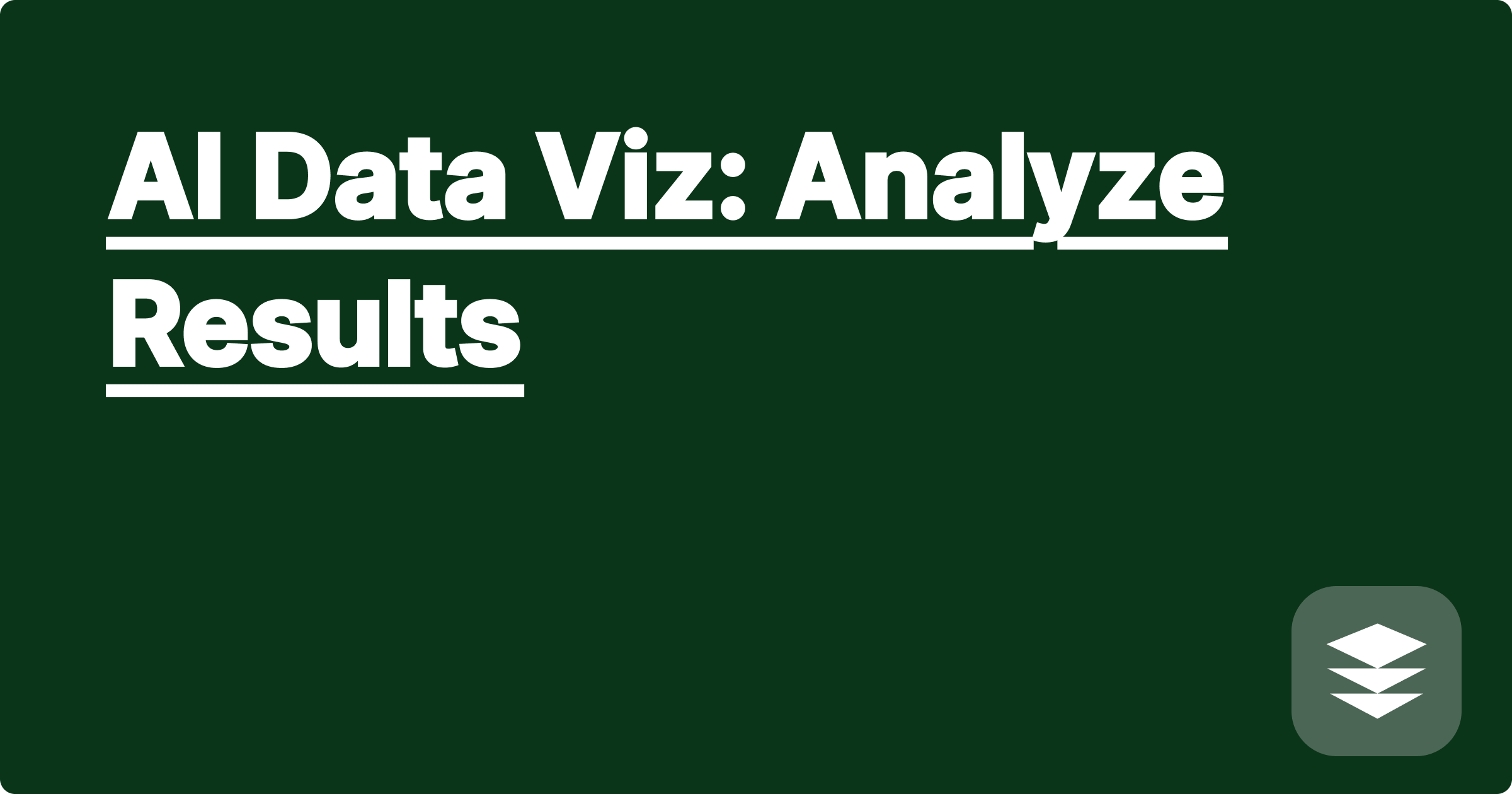
STEM fields are awash in data, a deluge that often overwhelms traditional analysis methods. Extracting meaningful insights from complex datasets can be a significant bottleneck, hindering research progress and delaying breakthroughs. Artificial intelligence offers a powerful set of tools to tackle this challenge, enabling researchers to visualize and interpret their data in new and innovative ways, ultimately accelerating the pace of scientific discovery. This blog post explores how AI-powered data visualization can revolutionize STEM research, providing practical guidance and examples for students and researchers seeking to harness the power of AI in their work.
For STEM students and researchers, mastering AI-driven data visualization is no longer a luxury but a necessity. The ability to effectively analyze and communicate complex data is crucial for securing funding, publishing impactful research, and collaborating effectively with colleagues. By embracing AI tools, researchers can unlock hidden patterns, identify critical trends, and gain deeper insights from their data, ultimately enhancing the quality and impact of their scientific contributions. This knowledge translates to more compelling presentations, more robust publications, and a greater ability to contribute meaningfully to the scientific community.
In many STEM fields, experiments and simulations generate massive datasets, often comprising multiple variables with complex interrelationships. Traditional data visualization methods, like simple scatter plots or bar graphs, struggle to capture the nuances of these high-dimensional datasets. Researchers often spend countless hours manually sifting through data, trying to identify relevant patterns and correlations. This manual process is not only time-consuming but also prone to human error and bias. Furthermore, static visualizations often fail to convey the dynamic nature of many scientific phenomena, limiting the researcher's ability to understand and communicate complex processes. The challenge, therefore, lies in finding efficient and effective ways to visualize, analyze, and interpret these complex datasets, extracting meaningful insights that can drive scientific discovery.
AI tools like ChatGPT, Claude, and Wolfram Alpha offer a transformative approach to data visualization. These tools leverage advanced machine learning algorithms to automatically identify patterns, relationships, and anomalies within complex datasets. ChatGPT and Claude, for instance, can be used to generate descriptive summaries of data trends and suggest appropriate visualization techniques. Wolfram Alpha excels at symbolic computation and can be invaluable for deriving analytical formulas and generating interactive visualizations based on mathematical models. By combining the strengths of these different AI tools, researchers can create dynamic and insightful visualizations that reveal hidden patterns and facilitate a deeper understanding of their data. These tools can also automate the process of generating visualizations, freeing researchers to focus on interpreting the results and formulating new hypotheses.
Begin by clearly defining the research question and identifying the relevant variables within the dataset. This initial step is crucial for ensuring that the visualization process is focused and aligned with the research goals. Next, choose the appropriate AI tool based on the specific needs of the project. If the goal is to explore general trends and relationships, ChatGPT or Claude might be suitable. For projects involving complex mathematical modeling or symbolic computation, Wolfram Alpha is often the better choice. Prepare the data for analysis by cleaning and formatting it appropriately for the chosen AI tool. This may involve removing outliers, handling missing values, and transforming variables. Then, input the prepared data into the selected AI tool and utilize its functionalities to generate visualizations. This might involve prompting ChatGPT to describe the data or asking Wolfram Alpha to plot a specific function. Finally, carefully interpret the generated visualizations, considering the original research question and the limitations of the chosen method. Iteratively refine the visualization process, exploring different parameters and techniques to gain a deeper understanding of the data.
Consider a researcher studying the relationship between temperature, pressure, and reaction rate in a chemical process. They could use Wolfram Alpha to plot a 3D surface representing the reaction rate as a function of temperature and pressure. The formula might be ReactionRate = k exp(-Ea/(RTemperature)) * Pressure^n, where k, Ea, R, and n are constants. Wolfram Alpha can then generate an interactive 3D plot that allows the researcher to explore the relationship between these variables visually. Another example could involve a biologist analyzing gene expression data. They could use ChatGPT to summarize the overall trends in the data and then use a tool like Python with libraries like Matplotlib or Seaborn to create customized visualizations based on ChatGPT's suggestions. For instance, ChatGPT might suggest creating a heatmap to visualize the correlation matrix of gene expression levels.
Integrating AI tools into your research workflow requires a strategic approach. Start by familiarizing yourself with the capabilities and limitations of different AI platforms. Experiment with various tools to determine which ones best suit your research needs. Develop strong data management skills, ensuring that your data is clean, organized, and properly formatted for analysis. Learn how to effectively prompt AI tools to generate insightful visualizations. This involves clearly articulating your research question and specifying the desired output format. Critically evaluate the results generated by AI, considering potential biases and limitations of the algorithms. Document your methodology thoroughly, including the specific AI tools used and the parameters employed. Finally, embrace continuous learning, staying updated on the latest advancements in AI-powered data visualization techniques.
To effectively integrate AI into your STEM research, start by exploring the available resources and tutorials online. Practice using different AI tools with sample datasets to gain hands-on experience. Collaborate with colleagues who have expertise in AI and data visualization. Attend workshops and conferences to stay updated on the latest developments in the field. By actively engaging with these resources and opportunities, you can unlock the full potential of AI-powered data visualization and accelerate your research journey.
AI Chemistry Solver: Ace Exams
AI Statistics Help: Data Analysis